Food & Wine Pairing 101
This post may contain affiliate links. Read my full disclosure policy.
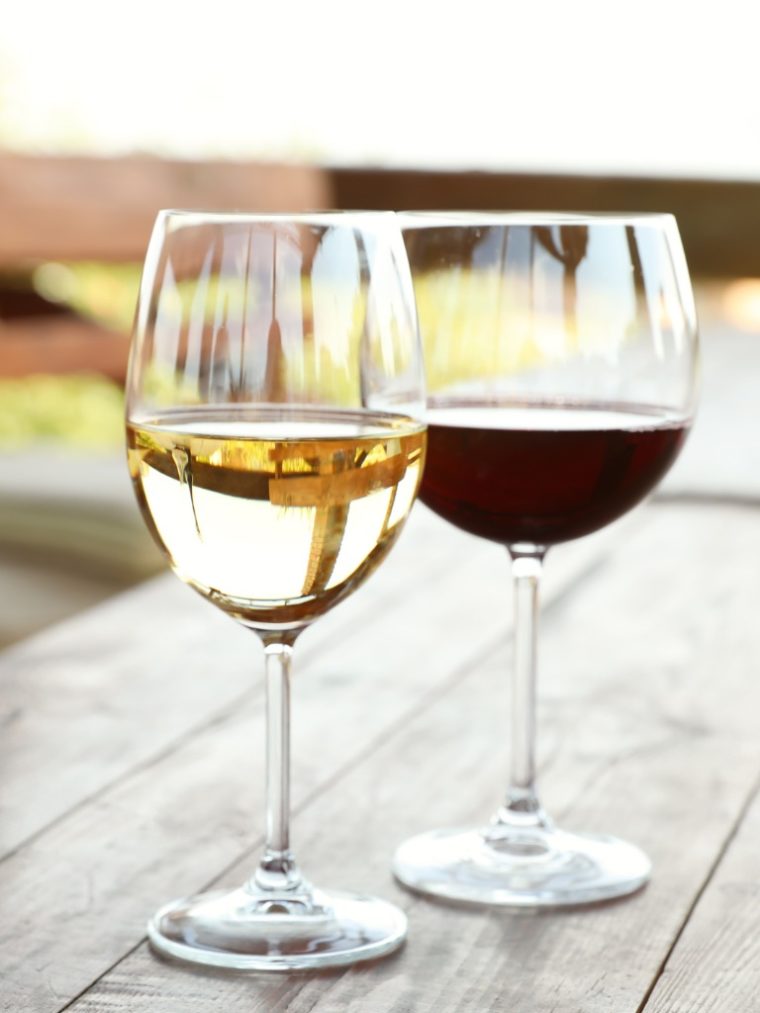
The right bottle of wine elevates any meal, and choosing the perfect bottle doesn’t have to be complicated.
Do you love to enjoy a glass of wine with dinner, but find choosing the right bottle intimidating? With so many different varietals, selecting a bottle of wine can be daunting.
Over my years working in restaurants, I picked up a few tried-and-true tricks for creating great food and wine pairings regardless of your budget or what’s on the table.
When selecting wine, it’s helpful to think about general food categories — appetizers, soups, salads, pastas, etc. — because the foods in these categories often share many of the same characteristics, and the same wine pairing works every time.
Below you’ll find my top choices for most food categories, as well as a few basics to know before you make your selections. I hope this primer demystifies wine selection and helps you find your perfect pairings!
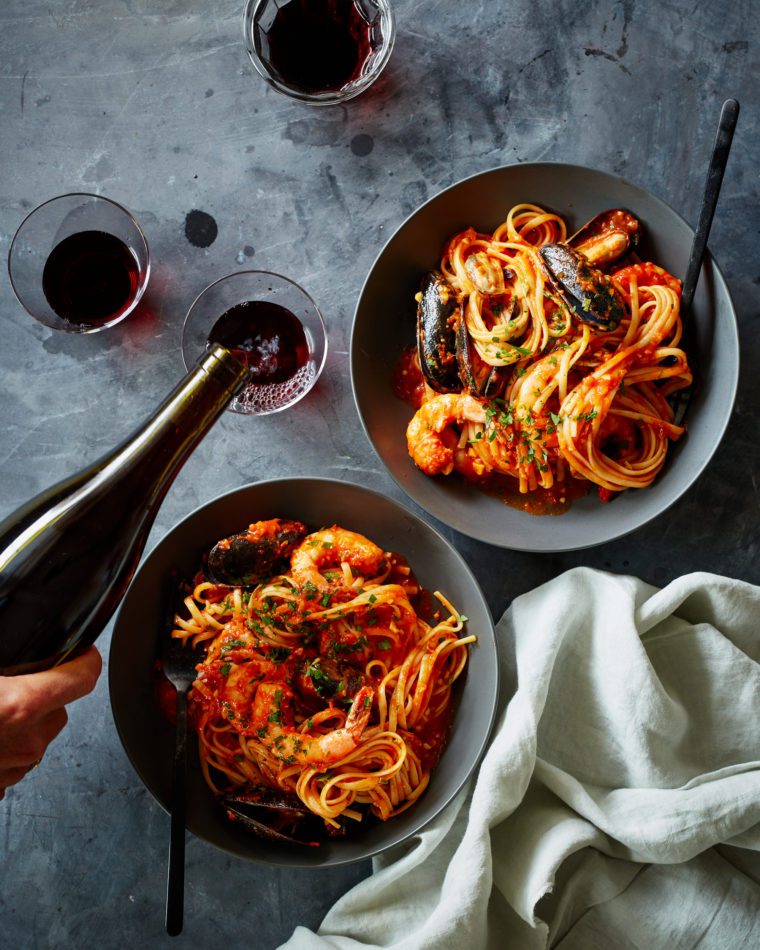
Before pairing food and wine, know the basics:
🍷 There’s a science to it: The aromatic and flavor compounds in wine interact with the fat, protein, and carbohydrates in food as we eat. It’s why restaurants design pairing menus and why some flavor combinations (like cookies and milk) are wonderful classics, while others (like grapefruit and milk) are, well, blech!
🍷 Simple is best: Don’t fret over the nuances of wine and food pairings. Instead, focus on overarching elements like sweetness, heat, or richness — and remember that opposites often attract. For instance, a zesty sparkling wine with crispy fried chicken or a crisp Sauvignon Blanc with creamy pasta.
🍷 Focus on feeling: Sommeliers and chefs often talk about the “structure” of a wine, which is a fancy way of describing how the wine feels on the palate. Is it rich like cream or does it make you pucker like lemonade? Acidity, tannin (the chemical compound in red wine that makes your mouth literally feel dry), and body are elements in wine often referred to as “structure,” and have the greatest impact on food pairing.
🍷 Take flavor descriptions lightly: It’s highly unlikely that any of us can detect the “hints of Tahitian vanilla” or “gently toasted clove” listed on the back of wine labels or on store shelves — that stuff’s for the experts and doesn’t mean we have dull palates! Believe it or not, our taste and aroma receptors are uniquely tuned based on our own life experiences, and we all experience these flavors differently.
🍷 Drink what you love: It’s always more important to enjoy what’s on the table than to follow any sort of wine pairing rule.
Food Groups + Best Varietals
Appetizers or Potluck + Sparkling Wine

Sparkling wine is a sommelier’s secret weapon because bubbles in wine act like a sponge, wiping our palates clean between bites, which means bubbly can flow from simple cheese and charcuterie plates to hot dips to pigs in a blanket, elevating every dish on a potluck table. I like to reach for classic sparkling wines like Italian Prosecco, Spanish Cava, or French Champagne depending on the occasion — they’re all incredibly versatile!
Soups & Stews + Pinot Noir
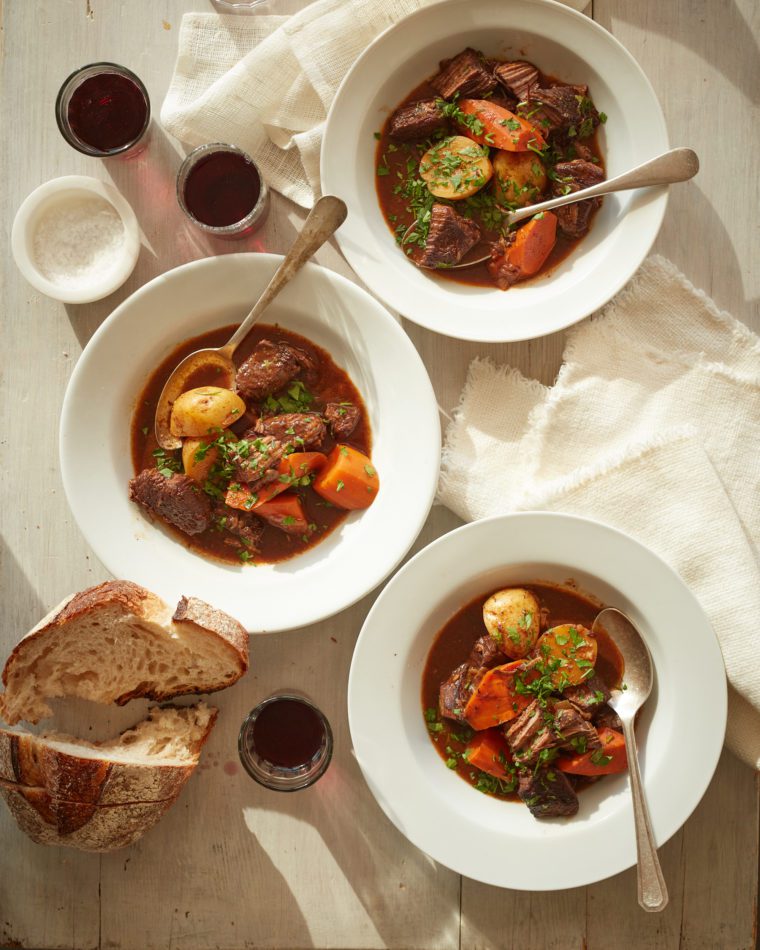
Photo by Johnny Miller (Clarkson Potter, 2021)
Pinot Noir is beloved for its silken texture and light-to-medium body, and it pairs well with hearty soups and stews, which have a similar feel. Additionally, pinot noirs have earthy undertones that highlight the medley of vegetables and herbs that make these dishes so flavorful and comforting. When served together, the combination is (almost) better than your favorite cozy sweater.
Spicy Foods + Rosé
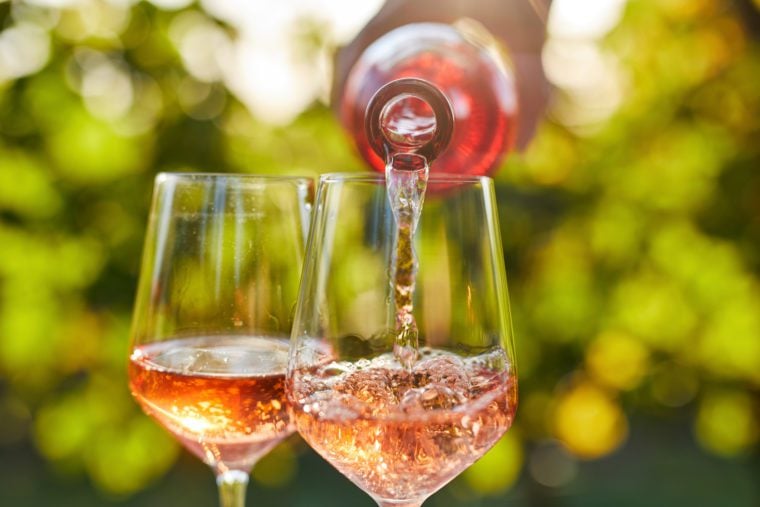
When spicy tacos, blackened fish, or anything Cajun is on the menu, I reach for a rosé. Rosés bring refreshing acidity and bright fruit flavors to the forefront, and their lower alcohol levels help tame the heat of chiles and spice blends.
Pizza + Barbera
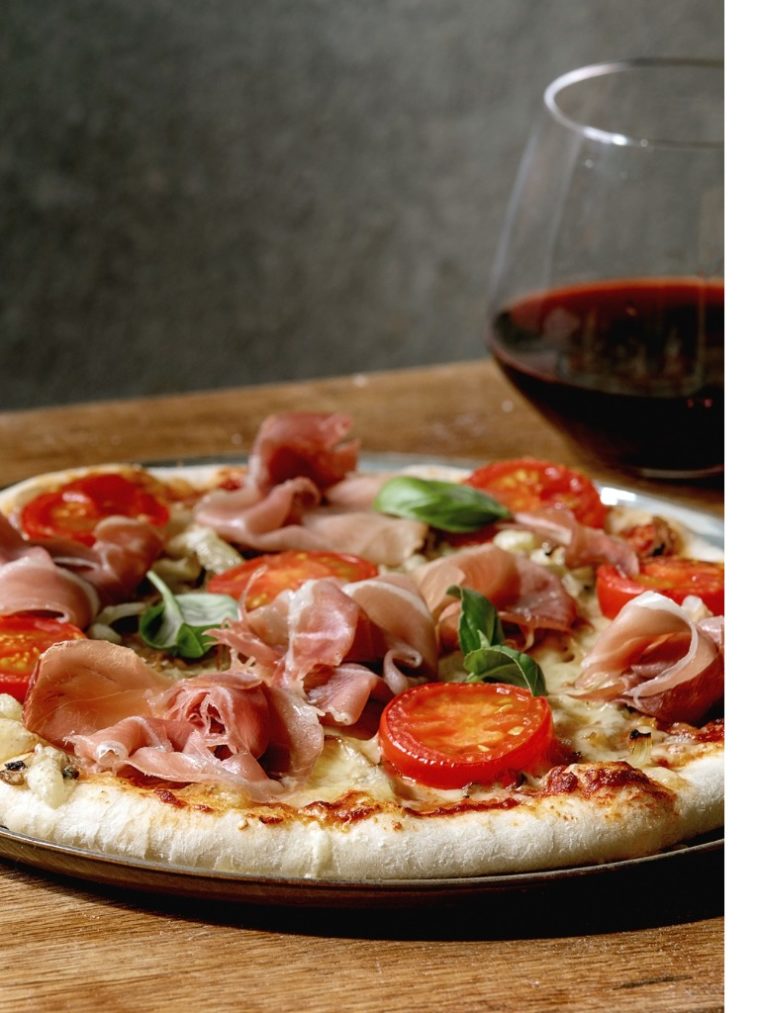
There’s a saying in the wine business that “what grows together, goes together,” and it rings true when pizza is on the table. Italian wines from the Barbera grape are light- to medium-bodied and have high acidity, which complement rich, cheesy slices of pizza. The wines’ classic red fruit flavors also harmonize beautifully with traditional toppings like bell peppers, fennel-laced sausages, and mushrooms.
Salads + Sauvignon Blanc
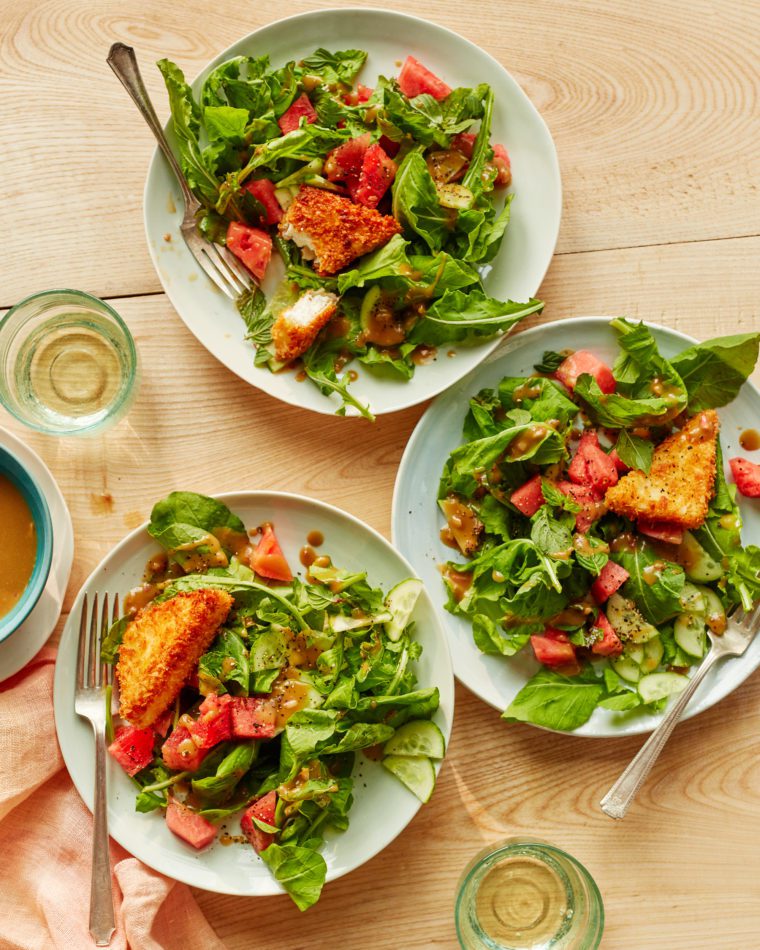
Photo by Johnny Miller (Clarkson Potter, 2021)
A veggie-laden salad is one of my favorite weeknight dinners, and it’s a great match with vibrant Sauvignon Blancs from France, New Zealand, and California. Known for their citrusy flavors, Sauvignon Blancs add a zing alongside salad the same way squeezing lemon over fish adds a pop of flavor. Because Sauvignon Blanc is rarely aged in oak barrels, which can give wines bolder flavors that overpower delicate veggies, it pairs well with salads of all kinds, from a classic wedge to a loaded Cobb.
Classic Pastas + Sangiovese
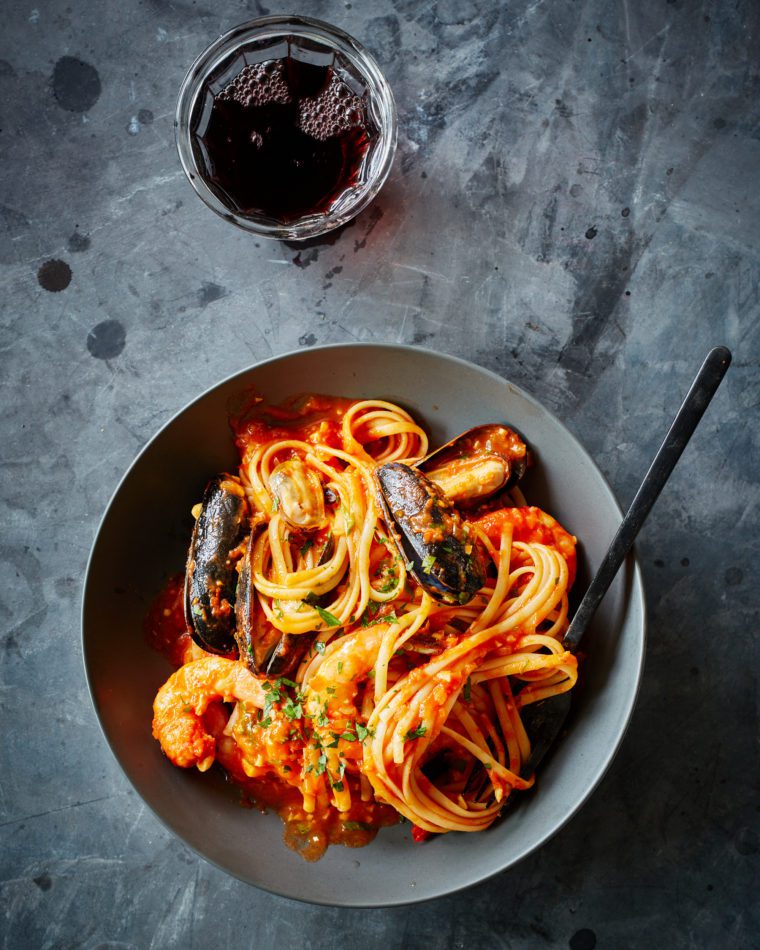
Photo by Johnny Miller (Clarkson Potter, 2021)
With traditional pasta dishes, few wines are as satisfying as an Italian Sangiovese (aka Chianti or Chianti Classico). These medium-to full-bodied reds beautifully accent fresh tomato sauces, robust Bolognese, baked ziti, or olive-oil based sauces. Sangiovese is known for its bright cherry flavors and herbal aromatics, which add intrigue and nuance when served alongside pastas of all kinds.
Barbeque + Syrah
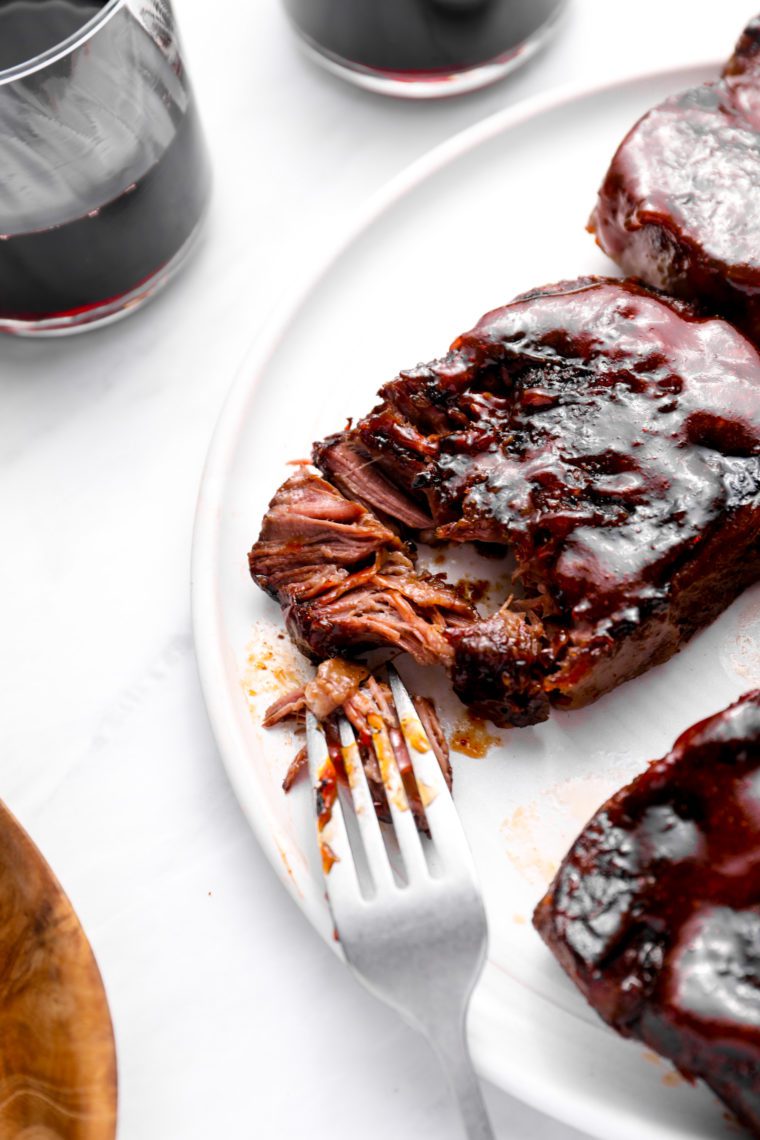
Ribs, pulled pork, and smoked meats are loaded with rich, smoky flavor, and few wines accentuate their characteristics as well as Syrah (also known as Shiraz). These wines are renowned for their spicy and smoky notes, which naturally parallel the flavors of barbecue and contrast well with sweet barbecue sauces.
Asian Takeout + Riesling
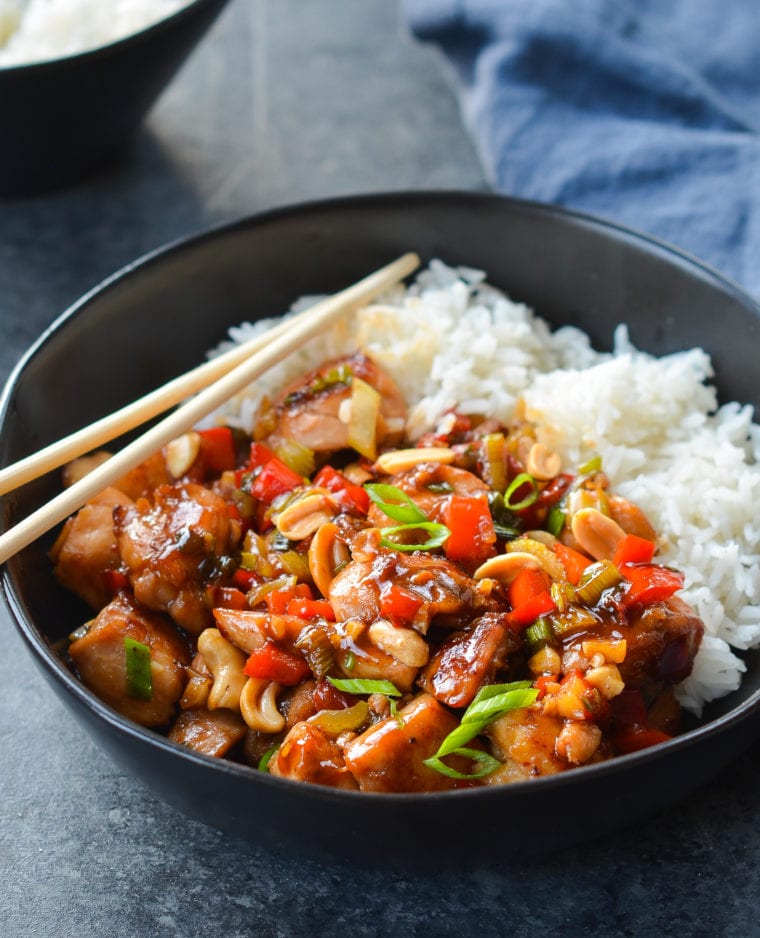 The spicy-sweet burn from traditional Asian stir-frys and zippy noodle dishes comes from a chemical called capsaicin found naturally in chiles and spices. The key to a great wine pairing with these dishes is to choose a slightly sweet wine because sugar naturally binds to capsaicin and eliminates the burning sensation of spicy food. Slightly sweet Rieslings, which feature vibrant, exotic fruit flavors are a natural match for spicy Asian takeout dishes.
The spicy-sweet burn from traditional Asian stir-frys and zippy noodle dishes comes from a chemical called capsaicin found naturally in chiles and spices. The key to a great wine pairing with these dishes is to choose a slightly sweet wine because sugar naturally binds to capsaicin and eliminates the burning sensation of spicy food. Slightly sweet Rieslings, which feature vibrant, exotic fruit flavors are a natural match for spicy Asian takeout dishes.
Vegetarian Centerpieces + Red Blends
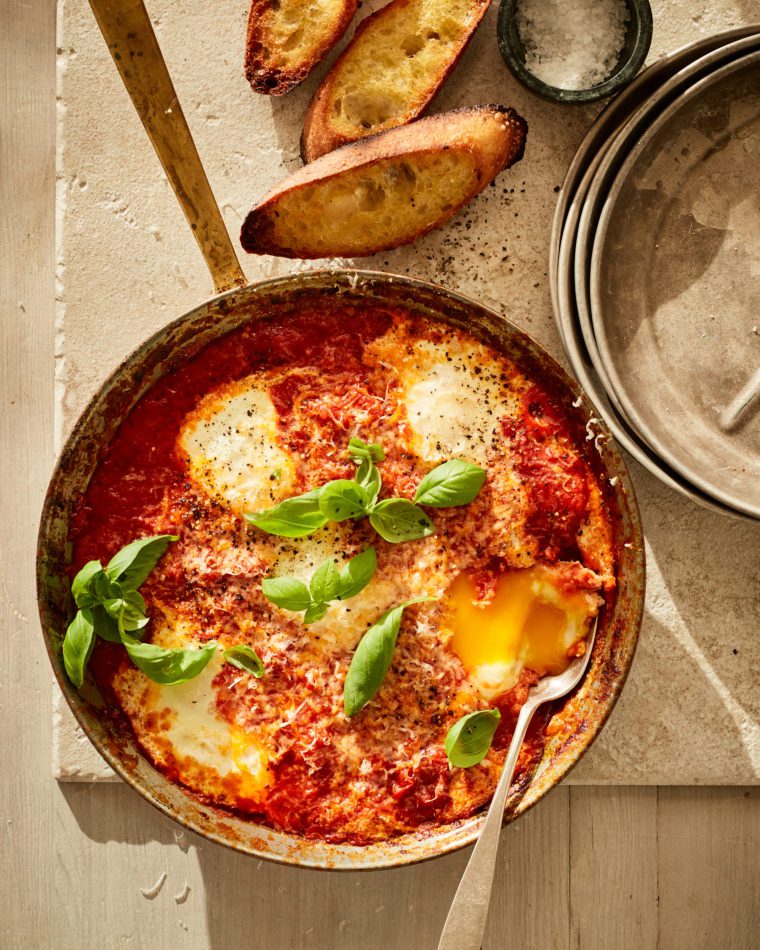
Photo by Johnny Miller (Clarkson Potter, 2021)
So much food and wine pairing literature focuses on animal-based proteins, but vegetarian recipes can have a perfect wine match too! Blends of red grape varieties sing when served with veggie-heavy fare. Medium-weight on the palate and boasting moderate tannins, traditional blends from California, France, and Australia don’t overpower the more delicate flavors of vegetarian dishes, yet have enough heft to stand up to hearty sauces, spice blends, and cheeses.
Burgers & Dogs + red Zinfandel
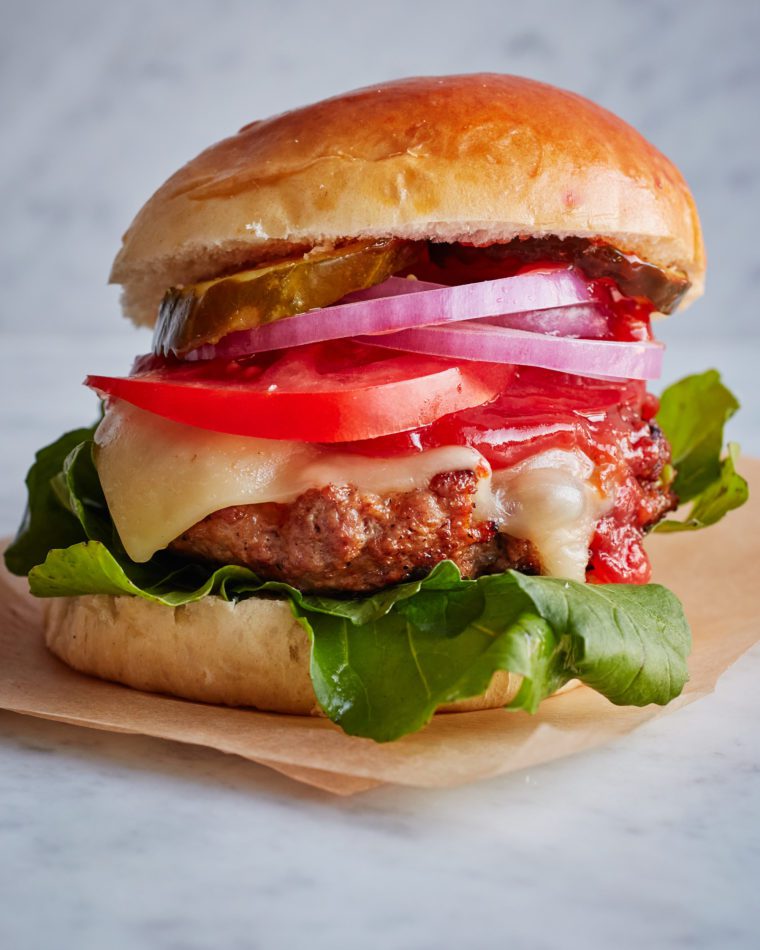
Red Zinfandel is one of California’s classic wines and is known for being full-bodied and ripe, with lots of wild berry and plum flavors and ample tannins. It’s a perfect match for classic burgers and hot dogs; the tannins in the wine cut through the heavy protein and fat content and make sauces and toppings pop.
Holiday Dinners + versatile red & white varietals
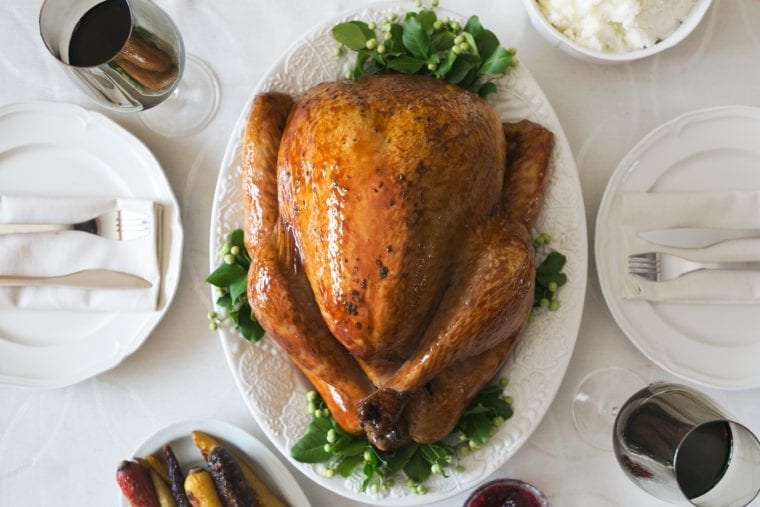
Photo by Sarah Plfug
When I’m entertaining for the holidays, I like to pour a red and white that complement the wide variety of foods on the table, from roast turkey to sausage stuffing to cranberry sauce. The key is selecting wines with moderate tannins and high acidity. For white wine, that means Riesling, Sauvignon Blanc, or sparkling wine. For red, Pinot Noir or Gamay (the grape of Beaujolais in France) are both great options.
But what about Cabernet and Chardonnay?
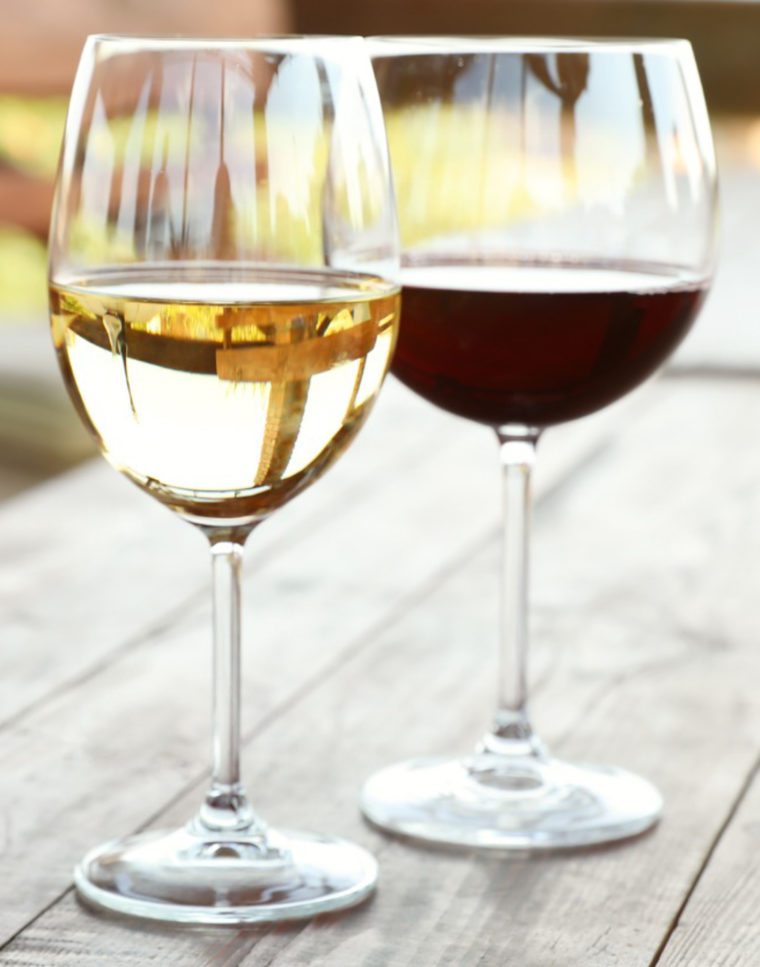
Surprised some of the most common wines aren’t listed here? That’s because a few of the most well-known wines, like Cabernet Sauvignon and Chardonnay, aren’t so flexible with a wide range of dishes. While Cabernet Sauvignon will always be king with ribeye, it’s less flexible with other fare because of its powerful tannins and full body. The same goes for Chardonnay, which may pair perfectly with roast chicken, but can sometimes be a bit clunky with other foods. It’s best to save these wines for classic pairings.
Cheers!
Whether you’re deciding what to pour with appetizers for the holidays or a cozy pasta dinner for two, this guidance should take some of the intimidation factor out of choosing a bottle of wine. Remember, the recommendations above will help you understand the “why” behind the pairings, but they are just suggestions! The most important thing is to drink what you love rather than following any hard and fast rules. Cheers to good food and good wine!
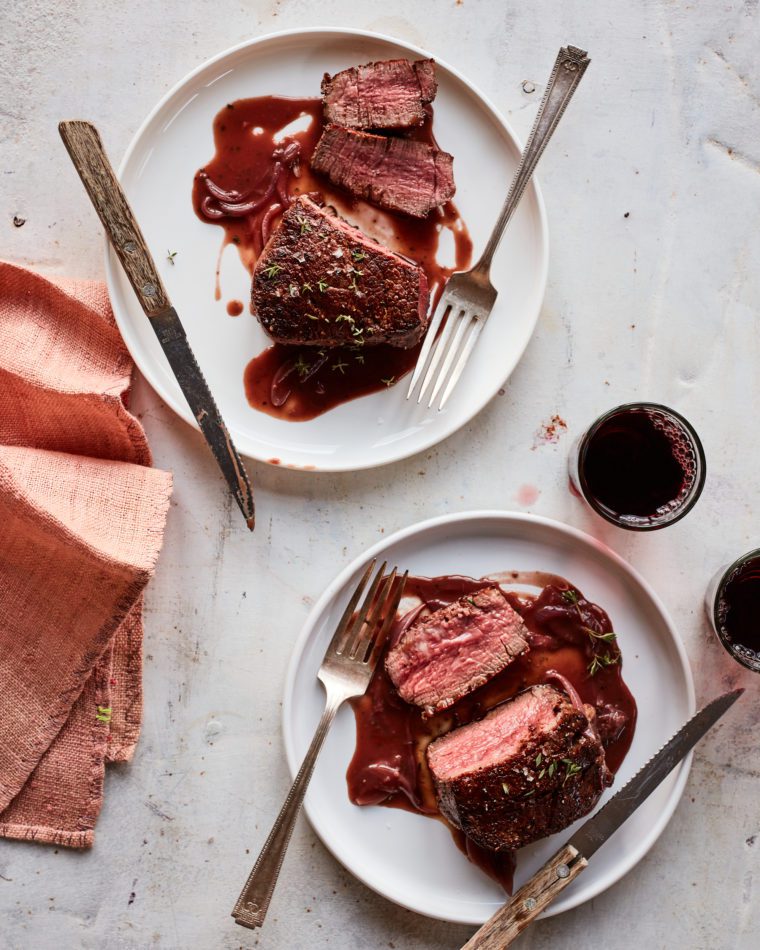
Photo by Johnny Miller (Clarkson Potter, 2021)

Thank you!
Allthough a bit early: best wishes from us in the Netherlands.
Thank you, this is very helpful!
Thanks Jen,
love to read your take on wine,
good to know,
and love that you share your knowledge, of your years in the food industry
Nice summary of choosing wine! My husband and I own a vineyard in west Sonoma Coast. I always say Pinot Noir is a great choice for just about any food. Usually, these wines are lower in alcohol than other red wines so they won’t overpower food. And Chardonnay has gotten a bad rap due to the overuse of oak to age the wine. These days, more and more Chardonnay wine is made using stainless steel, concrete and neutral oak for aging. The result is a crisp white wine that is not cloying. We drink it often as it is very palate cleaning! Cheers!
Loved this! I struggle sometimes with wine pairings, giving up to just drinking what I feel like with the meal. This article gives me plenty of ideas. Thank you!
Amazing article with great tips for wines! Gorgeous pics also! Thanks Jenn!
Wow, this post is incredibly helpful. Thank you!
Dear Jenn,
Thank you, Thank you, Thank you.
This is exactly what I needed and you have brought wine pairings down to a level that I
and the average person can understand. I will save this probably forever.
Happy Holidays.
Lynne
A very interesting and useful review of wine varieties. Thanks for the information.
Excellent article on wine pairing. Thanks!